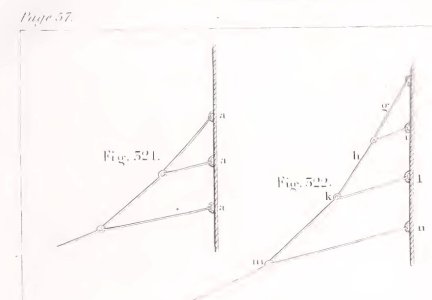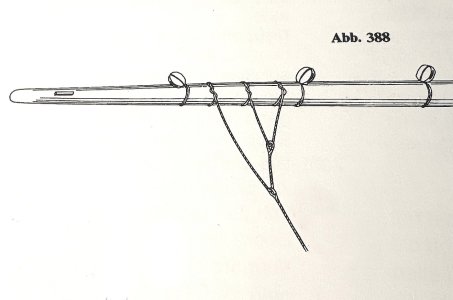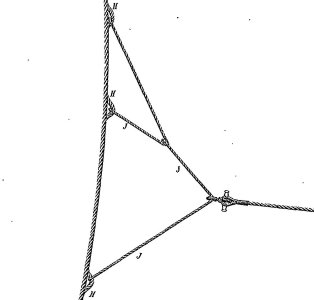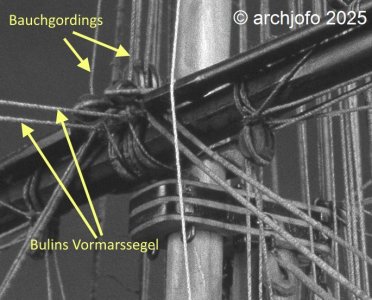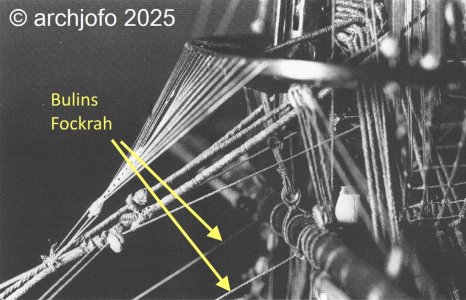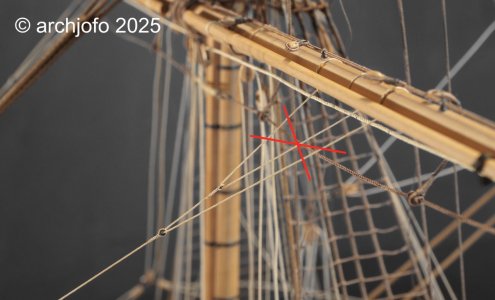- Joined
- Nov 10, 2019
- Messages
- 461
- Points
- 373

@Steef66
Hello Stephan,
Thank you for the interesting post with the pictures and suggestions.
Supplementary Note on the Routing of the Mainsail Bowlines
To further illustrate the issue described above regarding the routing of the mainsail bowlines (blue lines), I’d like to share two visual references. These are based on cropped images of my model and excerpts from Boudriot’s monograph, and are intended to clarify the technical challenge posed by the forward-leading arrangement.
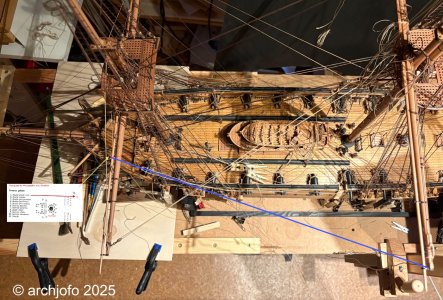
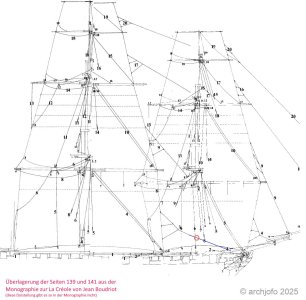
From my perspective, the solution depicted in the monograph—leading the bowlines over the foredeck—raises questions, particularly with regard to potential interference with the foremast rigging.
This configuration seems unusual when compared to other period models, where bowlines are typically belayed aft of the foremast.
I’d be very interested to hear your thoughts on this matter, and whether similar arrangements have been documented elsewhere.
Hello Stephan,
Thank you for the interesting post with the pictures and suggestions.
Supplementary Note on the Routing of the Mainsail Bowlines
To further illustrate the issue described above regarding the routing of the mainsail bowlines (blue lines), I’d like to share two visual references. These are based on cropped images of my model and excerpts from Boudriot’s monograph, and are intended to clarify the technical challenge posed by the forward-leading arrangement.


From my perspective, the solution depicted in the monograph—leading the bowlines over the foredeck—raises questions, particularly with regard to potential interference with the foremast rigging.
This configuration seems unusual when compared to other period models, where bowlines are typically belayed aft of the foremast.
I’d be very interested to hear your thoughts on this matter, and whether similar arrangements have been documented elsewhere.



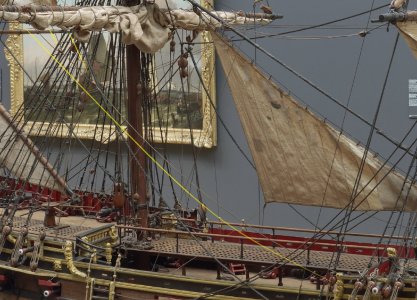
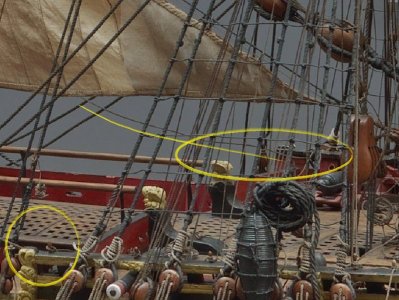
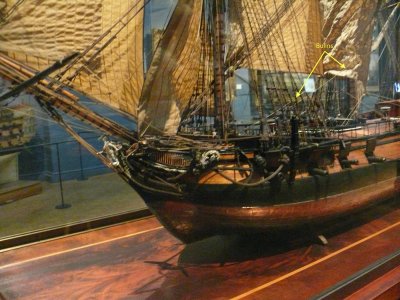
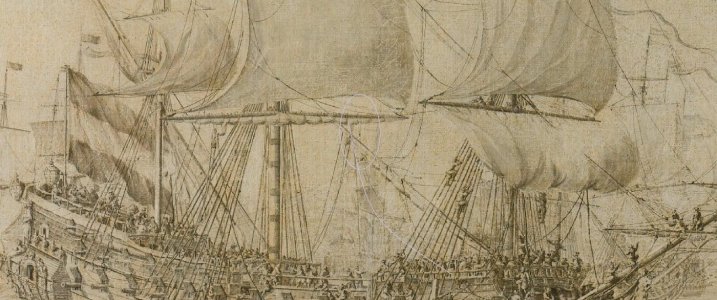
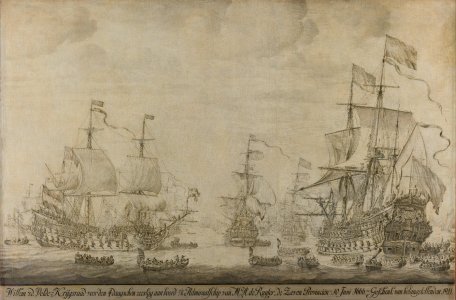

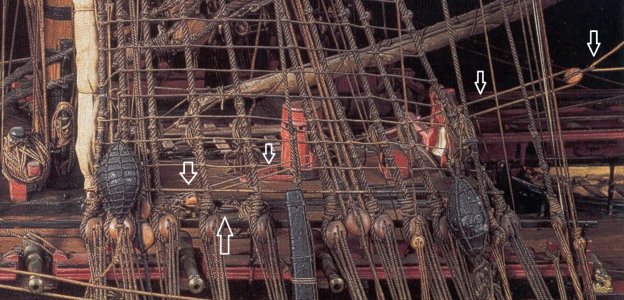
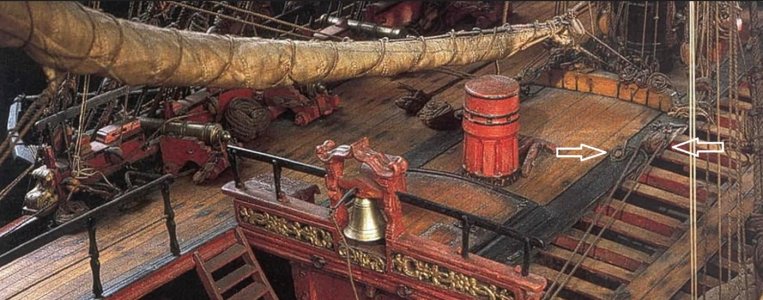
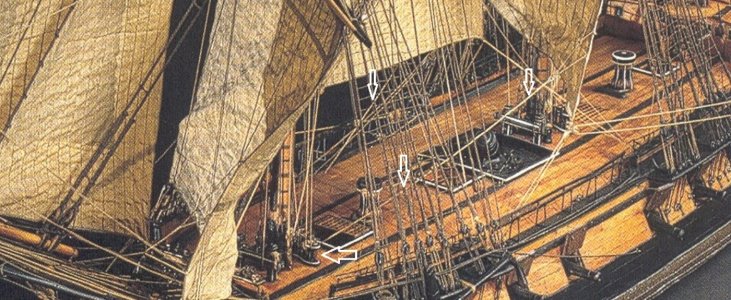
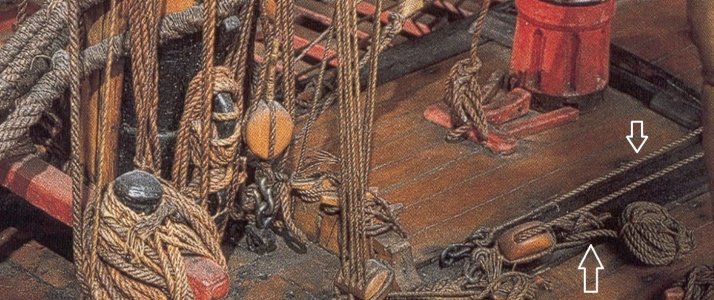
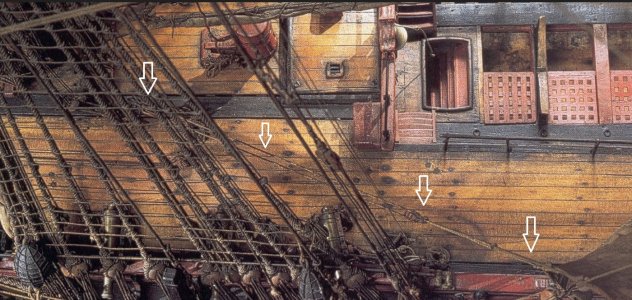
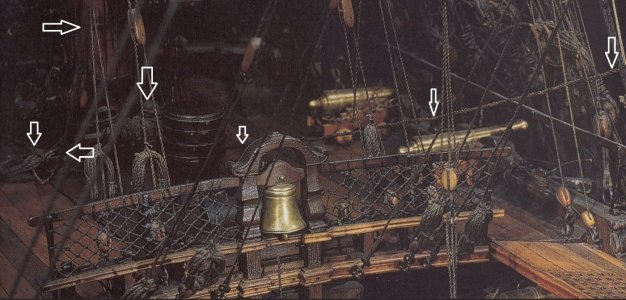
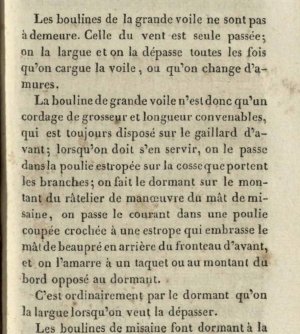
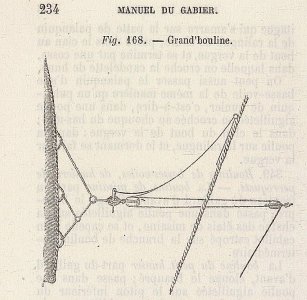
 , 1808/1843), and Brady (The Kedge
, 1808/1843), and Brady (The Kedge 